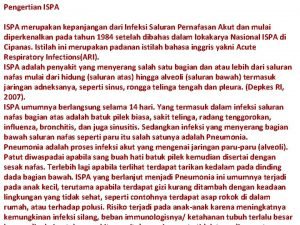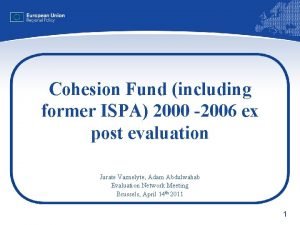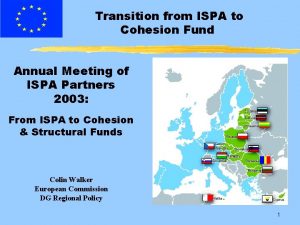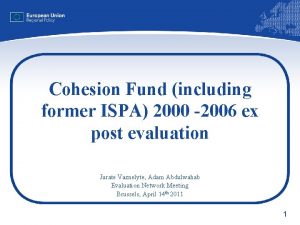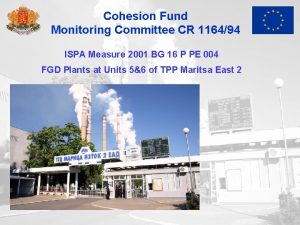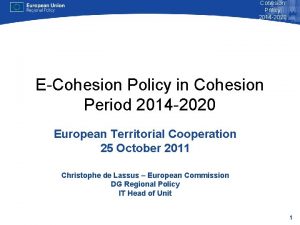Cohesion Fund ISPA to the Cohesion Fund creating













- Slides: 13

Cohesion Fund ISPA to the Cohesion Fund: creating a project pipeline Brendan Smyth Polish unit

Cohesion Fund z. Transition: ISPA is a genetically modified Cohesion Fund z. The volume problem: absorbing a huge increase in available CF budget z. Solution: partial absorption of future Cohesion Fund budget by ISPA projects and creating a new project pipeline

Polish example z. Modeling the Polish environment sector z. Following the Copenhagen summit: z 33% of Polish allocation in CF zassume 50/50 division between transport and environment

Polish example € million ISPA 2003 187 CF 2004 2005 2006 707 582 777 – 3. 8 X 2002 4. 2 X 2002

Polish example z. Absorbing the future CF: u. Annual commitments to approved projects up to 2006 uplus: annual commitments up to 2006 to ISPA projects approved in 2003 u. CF projects approved in 2004 -2006 z 33 projects already approved, 19 under preparation for 2003, 55 in table to 2006





Polish example €m ISPA CF 2000 -02 2003 Total forecast 538 187 726 2004 2005 2006 Total 625 367 281 1274 €m allocation % 726 100 707 582 777 2066 88 62

Conclusions l € 1. 27 million out of € 2. 07 billion, 62% of the budget, can be accounted for by commitments to known projects l large volume of investment (c. € 1 billion) yet to be identified and prepared: additional investment in regional program not taken into account l largest projects in cities over 100, 000 inhabitants are already included in the forecast l more solid waste and air projects will not easily solve the absorption problem: smaller average cost than water projects

Project Cycle l Strategy l Selection criteria l Selection l Planning and design l Tendering and contracting l Construction l Monitoring l Ex-post evaluation

Conclusions z Front load commitments to solve problem in 2004 z Debalance in favour of transport in the short term? z Increase grant rate to the maximum? z Expand responsibility for project development and implementation to the regions z Approve groups of small projects but there is still the management and capacity problem in small centers z Widen the definition of an environment project (air quality, flood control, monitoring, old industrial sites) z Mobilise all sources of project preparation (IFIs etc) z Can the Cohesion Fund work with current resources?
 Ispa kepanjangan dari
Ispa kepanjangan dari You are creating in prtu the value fund portfolio
You are creating in prtu the value fund portfolio Eu cohesion policy
Eu cohesion policy Petty cash replenishment process
Petty cash replenishment process Các châu lục và đại dương trên thế giới
Các châu lục và đại dương trên thế giới ưu thế lai là gì
ưu thế lai là gì Môn thể thao bắt đầu bằng chữ đua
Môn thể thao bắt đầu bằng chữ đua Tư thế ngồi viết
Tư thế ngồi viết Cái miệng bé xinh thế chỉ nói điều hay thôi
Cái miệng bé xinh thế chỉ nói điều hay thôi Hát kết hợp bộ gõ cơ thể
Hát kết hợp bộ gõ cơ thể Mật thư tọa độ 5x5
Mật thư tọa độ 5x5 Từ ngữ thể hiện lòng nhân hậu
Từ ngữ thể hiện lòng nhân hậu Tư thế ngồi viết
Tư thế ngồi viết Gấu đi như thế nào
Gấu đi như thế nào
